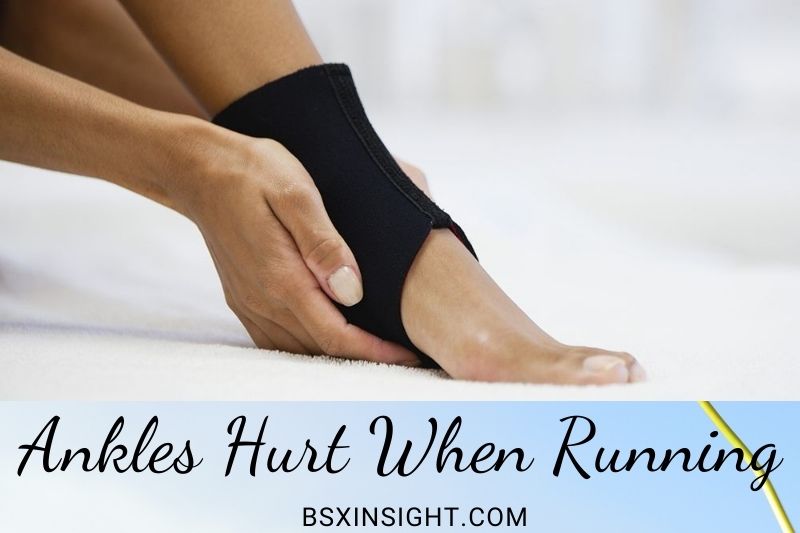- BSX Insight
You’re not alone if you’re experiencing pain in your ankles when running. Many people suffer from this issue, and there are a few things you can do to help alleviate the pain.
With this blog post, BSXInsight will provide a full explanation of why ankles hurt when running and how to treat and prevent this problem for you.
The Advantages Of Running

Running is a great way to get in shape and stay in shape. It is a low-impact form of exercise, so it is easy on your joints. It is also an excellent way to relieve stress. Running can be done anywhere, at any time, and it doesn’t require any special equipment.
There are many other advantages to running. It is a great way to build endurance and stamina. It can also help you lose weight if that is your goal. Running is an excellent form of cardio exercise, and it can also help to tone your muscles.
If you are new to running, start slowly and build up your mileage gradually. You can find a number of resources online or at your local library to help you get started. And be sure to listen to your body – if you are feeling pain or discomfort, slow down or stop. With a little time and effort, you can enjoy all the benefits that running has to offer.
While regular running has undeniable benefits, anyone who engages in high-impact exercise runs the risk of developing injuries.
This is especially true for people whose bodies have accumulated the wear and tear associated with a regular running habit, though problems can arise for anyone who has recently taken up running.
Examining the Foot and Ankle
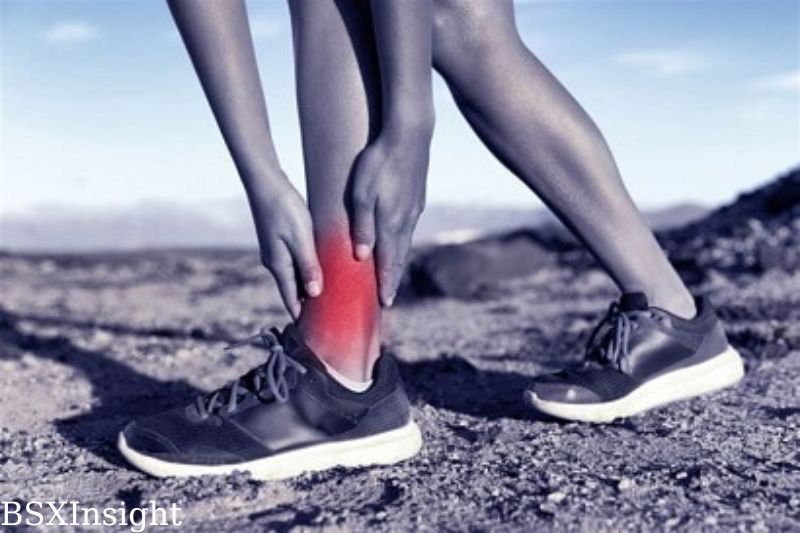
Ankles have two joints: the ankle joint and the subtalar joint. Your ability to flex and extend your ankle, as well as to move it laterally, is a product of these joints.
Similarly, there are three bones in each of these joints. Your tibia, or shin bone, is part of that. The fibula is the name for the bone that sits next to your shin, while the talus is the name for the bone that sits atop your heel.
Your ligaments, tendons, and muscles all contribute to the health of your ankle joint and its ability to withstand the impact of running.
Ankle Injuries During And After Your Run
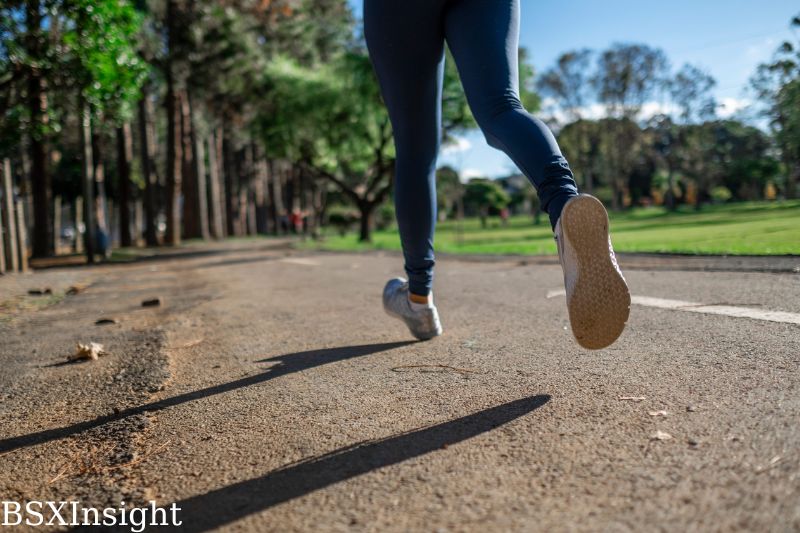
Ankle injuries are one of the most common injuries that can occur during or after a run. The most common type of ankle injury is a sprain, which occurs when the ligaments that support the ankle are stretched beyond their normal range of motion.
This can happen if you roll your ankle on uneven ground, land awkwardly after a jump, or make a sudden change in direction. A severe ankle sprain can result in torn ligaments and may require surgery to repair.
Other common types of ankle injuries include Achilles tendonitis, which is an inflammation of the tendon that connects the calf muscle to the heel bone, and plantar fasciitis, which is an inflammation of the tissue that runs along the bottom of the foot.
While most ankle injuries can be treated with rest, ice, and over-the-counter medication, severe injuries may require physical therapy or surgery.
What Causes Ankles Hurt When Running?

Runner’s ankle pain can be caused by a number of different factors. Muscle pulls, tears, and spasms account for the vast majority of such incidents.
Most ankle injuries happen when a runner’s foot suddenly becomes unstable due to an uneven surface, a quick change in speed or direction, poor running form, or weak ankle muscles.
Lack of protection and support for your foot while running can lead to ankle instability in those who have flat feet or high arches.
When a tendon is stretched beyond its normal range of motion, it is at risk of injury. One’s foot may roll inwards or outwards with each step if one is running on a surface that is slanted.
Ankle and Achilles tendon sprains and tears are more common as a result of this added strain. If you have weak ankle muscles, your joints may not have as much control, making it more likely that your ankles will roll.
In this article, we will examine the top five causes of post-run ankle pain.
Poor Running Form
One of the most common causes of ankle pain is poor running form. When you run, your foot should strike the ground directly beneath your center of gravity, and your leg should remain straight.
If your foot strikes the ground too far in front of your body or if your leg bends at the knee, it puts undue stress on your ankle joint, which can lead to pain.
Additionally, if you pronate (roll your foot inward) or supinate (roll your foot outward), it can also lead to ankle pain. Wearing shoes that are too small or too narrow can also contribute to ankle pain, as they don’t allow your foot to move naturally and put extra pressure on the joint.
Running on Uneven Surfaces
Ankle pain is a common problem, particularly among runners. It can be caused by running on uneven surfaces, such as dirt trails or sidewalks with cracks.
The unevenness of the surface puts extra stress on the ankle joint, which can lead to pain. Additionally, the impact of each step can jar the ankle, causing pain and inflammation.
Unsuitable Footwear
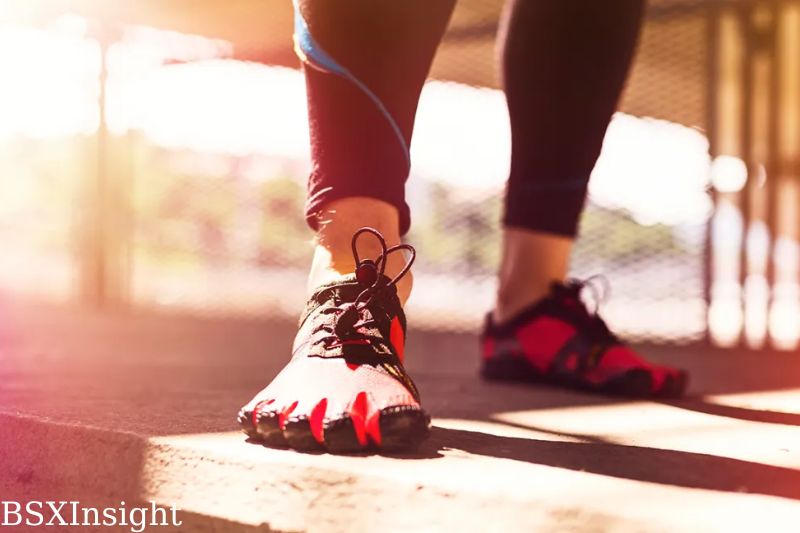
This can include shoes that are too small or too big, as well as those that do not provide enough support or cushioning.
Wearing shoes that do not fit properly can put undue stress on the ankles, which can lead to pain and injury.
Additionally, shoes that do not offer adequate support or cushioning can also cause ankle pain, as they do not absorb impact as well as they should. This can lead to joint pain and inflammation, as well as bruising and swelling.
If you are experiencing ankle pain after running, it is important to ensure that you are wearing proper footwear that fits well and provides adequate support and cushioning.
Weak Ankles
This can be caused by a variety of factors, including genetics, previous injuries, and poor conditioning.
When the muscles and ligaments that support the ankle are weak, they are more susceptible to injury. This can lead to pain when running, as well as during other activities.
In some cases, ankle pain when running can be caused by shoes that do not fit properly or that do not provide adequate support. Wearing high heels can also contribute to ankle pain, as can running on uneven surfaces.
Poor Flexibility in Ankles and Calves
When the muscles and tendons in these areas are tight, they can put unnecessary strain on the joints, leading to pain and inflammation.
This is often exacerbated by poor shoes or improper running technique. If you suspect that your ankles hurt after running due to tightness in your lower legs, try some simple stretches and exercises to improve flexibility.
Types of Ankle Injuries Due to Running
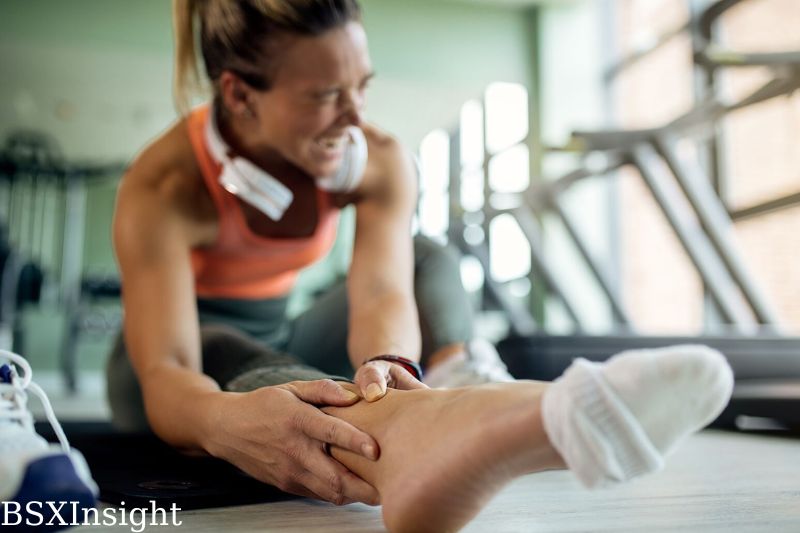
A Variety of Ankle Traumas As a result of Physical Activity
Because they tend to recur, ankle injuries are among the most frustrating types of running injuries. The most typical ankle injuries are listed below.
Ankle sprains occur when the ankle is twisted or rolled, typically during physical activity. You strain or tear the ligaments that hold your ankle bones together.
Depending on the extent of the damage, treatment may consist of the following:
- Putting on the brakes, icing, and squeezing
- Substitutes for opioids in the treatment of chronic pain
- Regaining ankle mobility and strength through rehabilitation.
- Ankle sprain surgeries are uncommon but sometimes necessary.
It’s annoying to deal with a sprain. Six months is the average recovery time for a severe sprain. Sprains are less predictable than breaks, which typically have a well-established, predictable course to recovery.
To regain mobility in the ankle while it heals, it is recommended to see a physiotherapist or orthopedist.
Stress Fractures in the Ankle
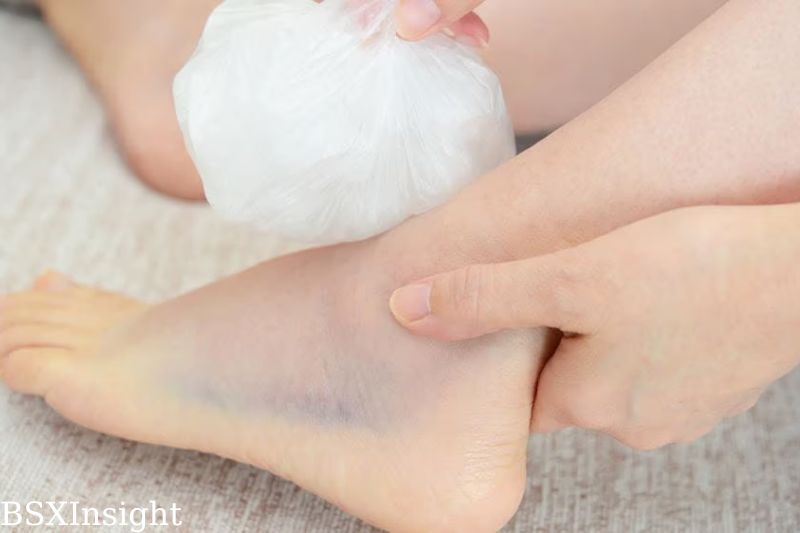
When a muscle or tissue in the ankle is sprained, it causes pain and swelling. Ankle strains typically manifest with localized swelling, bruising, and tenderness. Ankle sprains are treated with the tried-and-true methods of rest, ice, and compression.
Most runners can return to sports after two to four weeks of rest and rehabilitation from these injuries. Treatment and time spent resting after a strain depend on the extent of the injury.
Crevice Breaks
Stress fractures are breaks in the bone that develop after repeated stress. If you don’t warm up before you run or stretch afterward, you increase the likelihood of this happening. The prevalence of this injury is also increased in those who have flat feet or a high arch.
When bones are subjected to excessive biomechanical stress, such as from bearing an excessive load for an extended period of time, this is the primary cause. Ankle and shin pain can be alleviated by investing in a good pair of running shoes.
The severity of a stress fracture is a factor in how it is treated. When dealing with minor injuries, rest, ice, compression, and elevation are all effective. Some injuries are so severe that they call for surgery, physical therapy, and crutches.
Tendinitis
Injuries to the tendons cause tendonitis. Tendonitis is a painful condition caused by inflammation and swelling in a tendon as a result of overuse. Tough bands of tissue called tendons attach muscle to bone. Tendonitis most commonly affects the patellar tendon in the knee and the Achilles tendon in the back of the ankle.
How to Run Without Injuring Your Ankles: Additional Safety Measures
The best way to prevent sore ankles after running is to strengthen the muscles and ligaments around the ankle. This can be done with a variety of exercises, such as calf raises and heel raises.

Stretching: Don’t Forget Your Ankles
Many runners forget to stretch their ankles before and after a run. This can lead to tightness and stiffness, which can increase the risk of injury. Be sure to include ankle stretches in your pre- and post-run routine.
Wear the Right Shoes
Wearing the right shoes is important for all runners, but it’s especially important if you’re trying to prevent ankle injuries. Look for shoes that provide support and cushioning, and be sure to replace them when they start to wear out.
Listen to Your Body
If you start to feel pain in your ankles, it’s important to listen to your body and take a break. Rest, ice, and elevation can help to reduce swelling and pain. If the pain persists, be sure to see a doctor.
FAQs
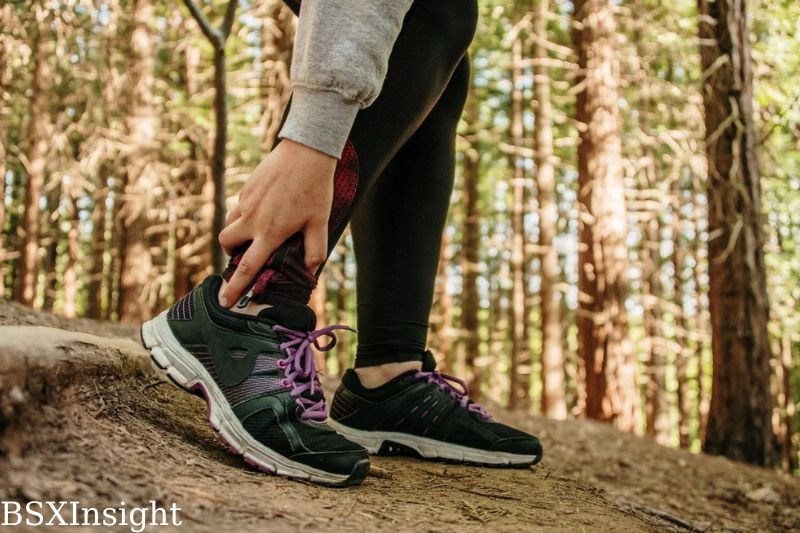
If my ankles start to hurt, should I stop running?
Therefore, until the pain has completely subsided, you should refrain from running. While your ankle recovers, you can either take it easy or find other ways to stay active, such as swimming.
The best way to get your ankles ready to run is how?
You can do this by pointing your foot upward and touching your toes to your shin. Five times on each side, hold for 30 seconds. After that, do some ankle pump downs by pointing your toes and foot as far down as possible.
Are a runner’s ankles too weak to run?
There are many people who can relate to your plight if you suffer from weak ankles. Runners aren’t the only athletes who suffer from this problem, though. If you experience this issue, you probably run with an abnormal preference for the lateral aspect of your feet. Therefore, after finishing your workout, you probably feel tired in the legs and feet.
Conclusion
Ankle strains and sprains are common injuries but can be treated with a combination of rest, ice, and compression. Make sure to stretch before and after running to reduce the risk of injury. And, if you experience pain in your ankles, listen to your body and take a break. Hope this article was of some help. Thanks for your reading!

